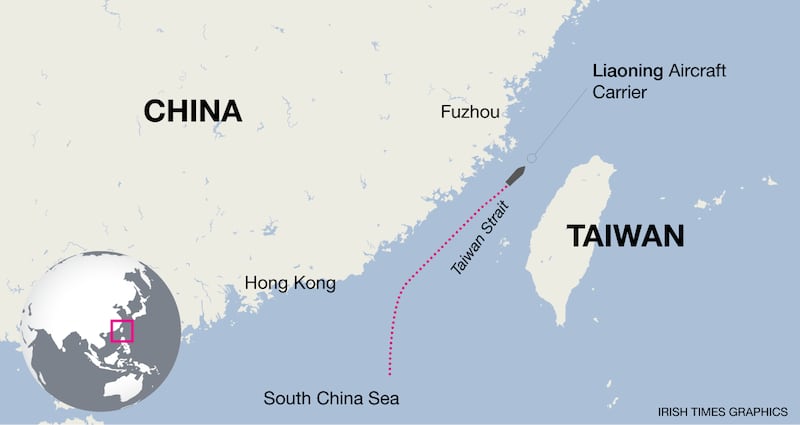Taiwan scrambled fighter jets on Wednesday after China's Liaoning aircraft carrier sailed through the Taiwan Strait. The order was executed only hours after Japan and South Korea deployed fighters after sighting Chinese military aircraft between the East China Sea and the Sea of Japan.
Beijing’s bitter spat with its neighbours over its claims in the South China Sea, and its increasingly fiery rhetoric regarding Taiwan after US president-elect Donald Trump’s tough talk over trade, are adding to growing tensions in the area. While widescale conflict does not look likely, there are growing fears of skirmishes that would damage ties and upset global trade relations.
China claims nearly all of the South China Sea, through which around €4.75 trillion in trade passes every year, even though an international tribunal in The Hague has rejected Beijing’s claims.

Its neighbours, Brunei, Malaysia, the Philippines and Vietnam, as well as Taiwan, which China considers part of its territory, also have competing claims in the region.
The flurry of activity in the area reflects Beijing’s anger at Taiwan’s efforts to cosy up to the US, after President Tsai Ing-wen called Mr Trump to congratulate him on his victory.
China and the US locked horns last month after the Chinese navy took a US underwater drone in the South China Sea amid growing concern in Washington over the militarisation of man-made islands in the region, including the Spratly Islands and the Scarborough Shoal.
Over the weekend, a Chinese bomber conspicuously flew over the Spratlys.
Diplomatic ties
Furthermore, Beijing insists Taiwan is part of China and has threatened to take it back by force if necessary. Nationalists under the command of Chiang Kai-shek fled to Taiwan after they lost the civil war to the Communists in 1949.
Mr Trump has further upset Beijing by suggesting Washington might abandon the one-China policy, where Washington has diplomatic ties with the mainland and, while maintaining good relations, does not recognise Taiwan as a country.
China's ruling Communist Party believes Ms Tsai has a pro-independence agenda.
Taiwan dispatched its jets and navy vessels to monitor the passage of the Soviet-built Liaoning, which was returning from drills to test weapons and equipment in the disputed sea. China's sole aircraft carrier was not trespassing in Taiwan's territorial waters but entered its air defence identification zone in the southwest, Taiwan's defence ministry said.
Taiwan’s policymaker for relations with mainland China has urged Beijing to resume communications, after China cut official channels in June.
“I want to emphasise our government has sufficient capability to protect our national security. It’s not necessary to overly panic,” said Chang Hsiao-yueh, minister for Taiwan’s mainland affairs council.
Intelligence gathering
Meanwhile, eight Chinese military aircraft, including six H-6 strategic bombers, a Y-8 early warning aircraft and a Y-9 intelligence-gathering plane, were spotted flying back and forth over the Tsushima Strait in the eastern channel of the Korea Strait, close to Japanese islands on January 9th.
China and Japan are at loggerheads over territory in the East China Sea. Both claim an archipelago – known as the Senkakus in Japan, to whom they officially belong, and the Diaoyus in China.
Beijing has also clashed with South Korea over the deployment of the Terminal High Altitude Area Defence (Thaad) anti-missile system. Seoul said it deployed the US system to keep tabs on North Korea's nuclear programme, but Beijing, and Russia, believe the system is being used to monitor their missile capabilities.
In an editorial, the state-owned Global Times, which takes a sharply nationalist tone, accused Tokyo and Seoul of trying to hype up regional tensions in a provocative way.
“Tokyo and Seoul hope to deter China with US strength, but China has the ability to counter. A balance of power may exist for a long time in the region. Should a confrontational mentality be fixed in the region? In the face of a lacklustre situation, China, Japan and South Korea should continue communication. Hatred is least wanted in the region,” it said.












